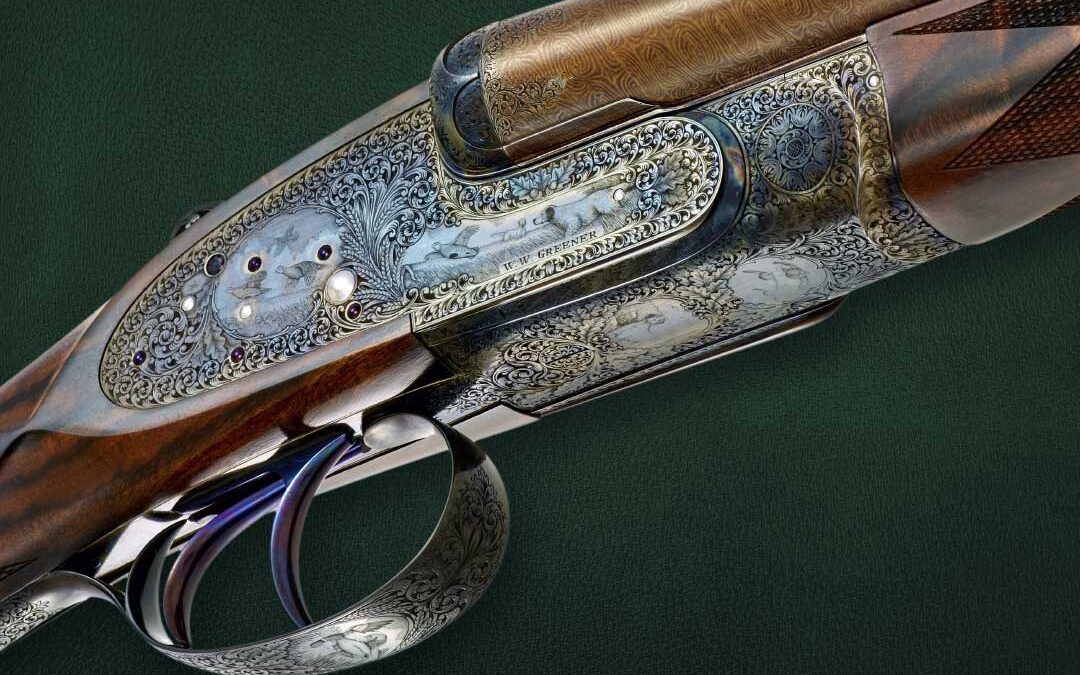“Martha, did you remember to bring my Greeners?” drawls John Wayne in the lame horse opera “Big Jake.” But the sawn-off hardware provided by the prop department is actually a brace of American Gun Company’s Crescent hammer guns. No matter, the point is that it takes a special brand to be used as a generic name. And since 1829, “Greeners” have been a special brand with a reputation for making unique shotguns.
Moreover, this great British business has long enjoyed a special relationship with the American people providing shotguns for Wells Fargo and a whole slew of America’s most successful live pigeon shots. According to Graham Greener, who wrote The Greener Story from which I have taken much of this information, Doc Holiday killed Tom McLaury with a Greener shotgun at the gunfight at the O.K. Corral. What we know for certain is that William Wellington Greener created an elaborate pavilion to house his guns for The World’s Columbian Exposition held in Chicago during 1893 and sent multiple firearms to the St. Louis World’s Fair of 1904.
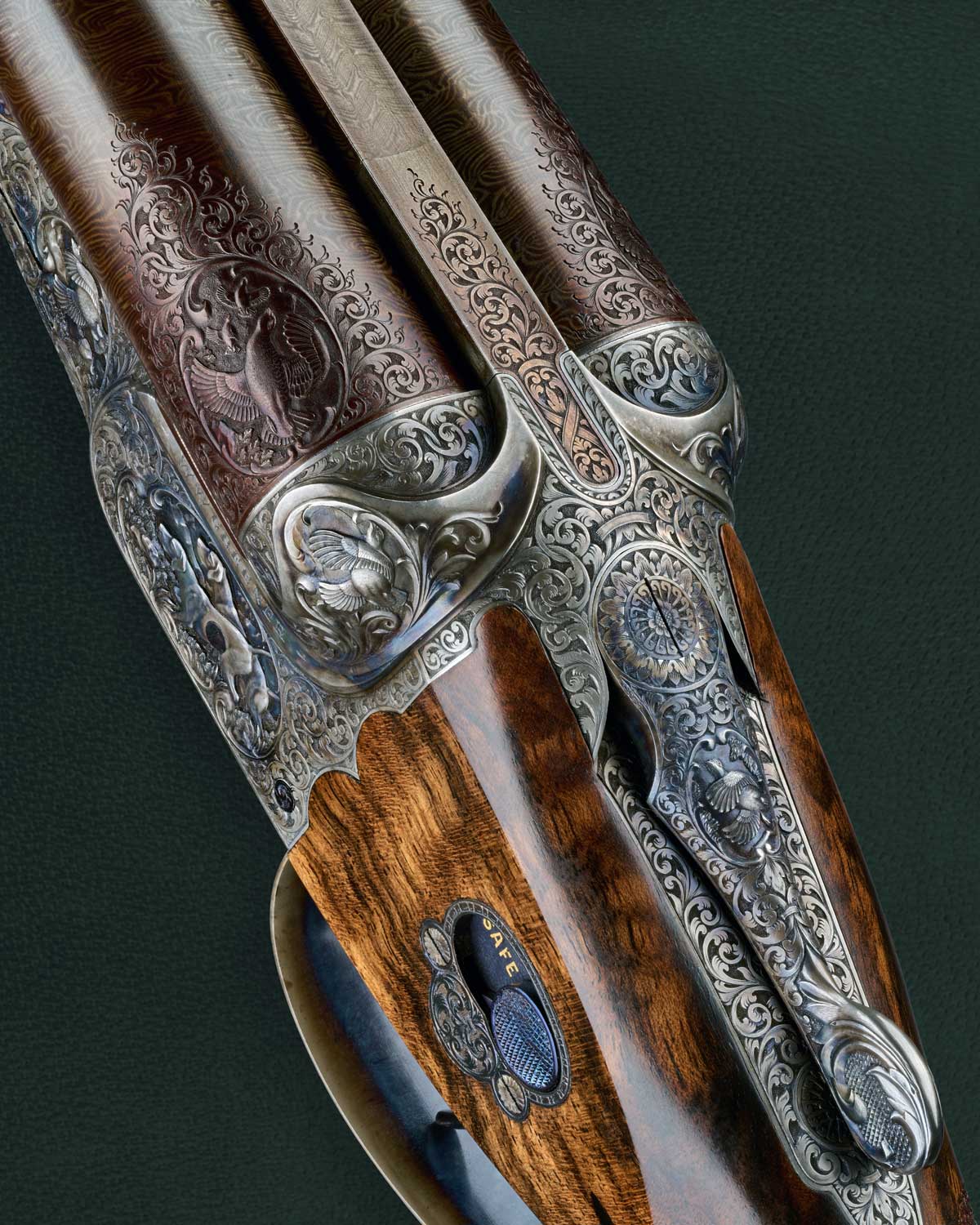
Some of the firearms that crossed the Atlantic were prosaic products of the Greener factory intended for market hunters, wildfowlers and pigeon shots. But many were what Greener called “special quality exhibition guns.” Ever the savvy promoter, W. W. Greener perfectly understood the burgeoning wealth of the United States and its market potential. He “recognized this unique opportunity to show off his latest sporting weapons to maximum number of potential customers.” Graham Greener tells us the company sent an “exquisite pair” of Imperial grade hammerless ejector 12-bore shotguns with 30-inch barrels to St. Louis. The idea appears to have been to create showpieces on which engraving intended for big game rifles, game guns or live pigeon guns are all accommodated on one extraordinary pair. The guns feature gold inlays of blue rock pigeons, stags, putti, ducks and dogs.
After the show, the pair was sold for £101. Years later, in the 1930s, they were divided and disappeared into private collections. In 1996, one resurfaced when it was donated to the Cody Firearms Museum in Cody, Wyoming. Then just a few years later, the owner of the second gun saw images of the first on an internet site created to collect data for Graham Greener’s book. He realized the importance of reuniting the pair and donated the second gun to the Cody Museum. In 2004, a century after the World’s Fair, a Greener client was so inspired by the quality and opulence of the St. Louis guns, he ordered a new one for himself.
This new gun, which the owner refers to as his “Saint Louey Twoey,” features engraving by Paul and Alan Brown. The Brown brothers have found inspiration in the original style and then interpreted it liberally, not literally. While many Greener design features remain, such as clam shell fences and a scalloped back to the action, gone are the elements inappropriate to a birding gun. The remaining dogs and ducks are more realistic than ever. It is a fitting tribute to a great historic event.
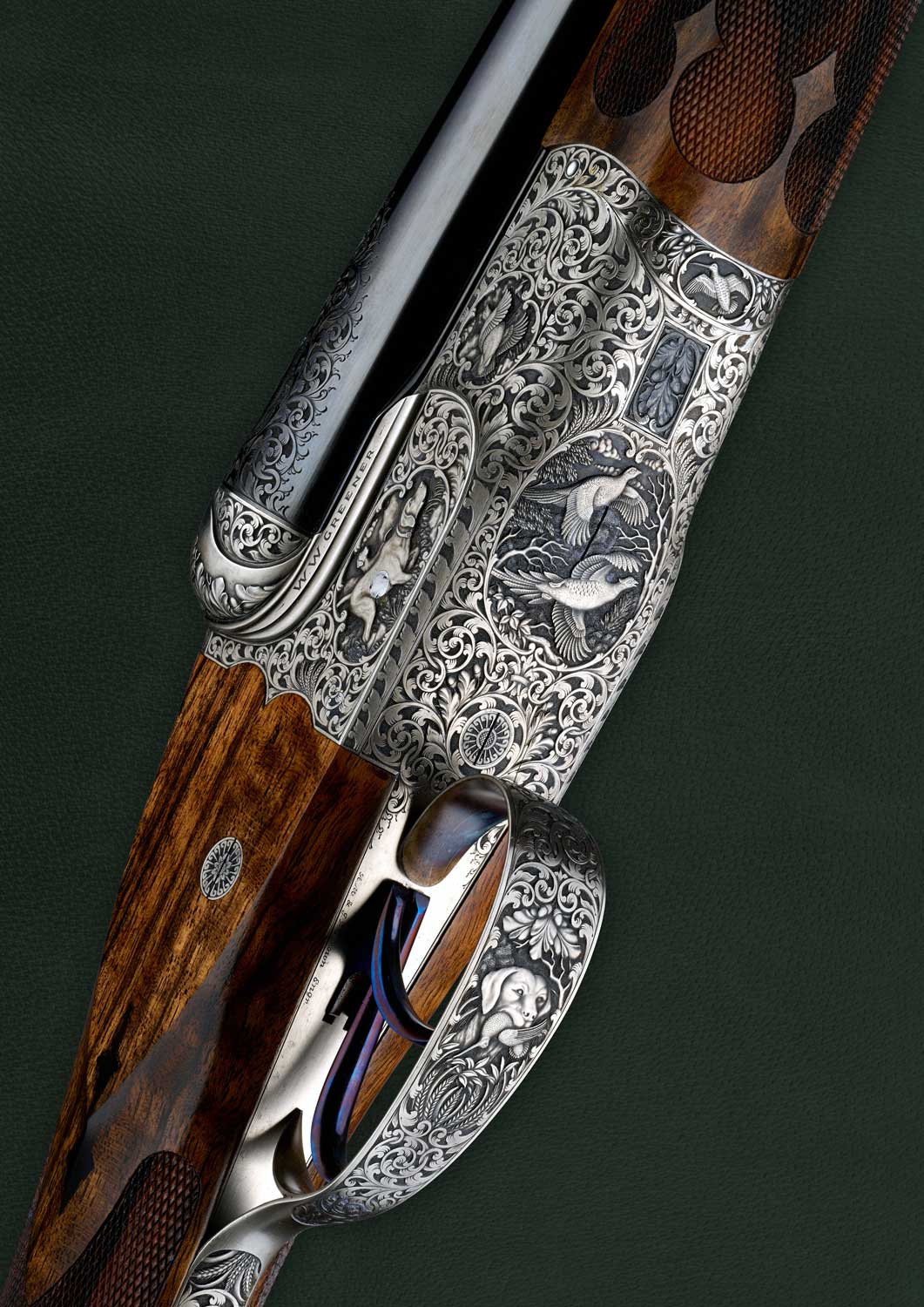
A decade after the St. Louis World’s Fair, Greener produced a sumptuous little catalog in which he offered his “St. George Grade Guns.” In its 200-year history, Greener has built only four. The first two were created on Greener’s unique proprietary action that has come to be known as the “G gun.” The first of these St. George guns was completed around 1903 and deeply carved with England’s patron saint in armor facing a winged dragon and was christened, “The Show Gun.” William Wellington Greener acknowledged its value when he presented it to his son Harry, in whose hands he said, it has been, “the best advertisement so far tried.” A second gun with identical decoration was created a few years later but was reportedly lost at sea en route to a Persian noble.
Throughout the 20th century, Greener continued creating highly ornate guns and rifles for privileged customers. In 1922 they built a stupendous 600 NE presentation express double rifle for big game hunter Marius Maxwell and, in the same decade, a presentation pair of sidelock pigeon guns for Said Halim Pasha, Grand Vizier of the Ottoman Empire, and a 16-bore presentation game gun for Mohammed Nadir Shah, King of Afghanistan.
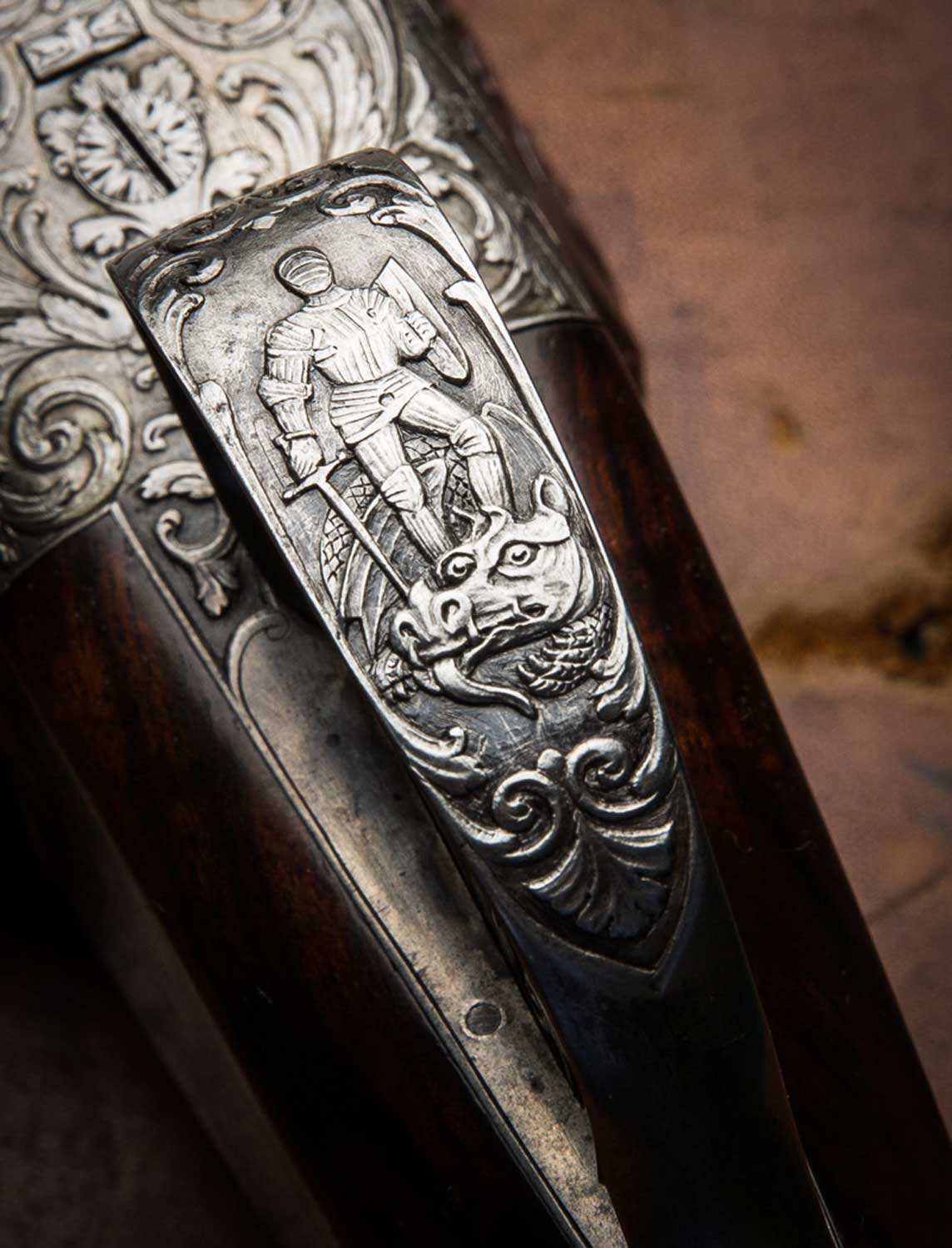
The trigger bow of the most recent St. George gun.
But the 20th century also brought with it the winds of change. Two world wars and The Great Depression created more egalitarian societies that were perhaps less interested in hunting than previously. Further, post-war buyers demanded plainer more practical and affordable fare and Greener was eventually sold to Webley & Scott, manufacturers of altogether more prosaic products.
Then, in 1985, a fifth-generation family member, Graham Greener learnt that Greener was for sale. Mr. Greener put together a winning consortium and bought the company with the dream of revisiting the grandeur of the golden age. Initially, at least some products were “manufactured” guns that had been successful sellers for Webley & Scott.
Later, in May of 2003, I received a note from Graham that read, “You may publish the following: W. W. Greener makes Exhibition quality sporting guns only. The company has a nucleus of two of the best gunmakers in the world and a team of the finest craftsmen in the country, most of whom are freelancers and self-employed. By employing the highly skilled craftsmen, who have surpassed the quality of guns produced in most factories, the company makes the very best shotguns and rifles crafted in England today…. Each gun is individually made on one of three different types of action. All are of Exhibition quality and therefore each gun is priced individually.”
What Graham Greener didn’t tell me, but I already knew, was that the “nucleus” of two gunmakers was Richard Tandy and David Dryhurst, two of Britain’s greatest gunmakers famous for the guns they built for the London trade. They have been credited with continuing to push Greener quality ever higher. A new 12-bore built on Greener’s unique, self-acting G gun action and lavishly carved by Alan Brown is a drop-dead example.
Since its 1985 renaissance, every Greener, whether G gun or sidelock, has been special built with an eye for aesthetics and a perfect understanding of balance and handling. But even by their own sky-high standards, Tandy and Dryhurst’s latest efforts are extraordinary. Dryhurst was one of Greener’s last apprentices and, when the Birmingham gun quarter factory was razed in 1967, he saved various remaining bits and bobs. An old original machined action became the starting point for a new G gun and when we asked Tandy about it, we got this: “It was a special commission as we used all original components, even the French walnut stock blank came out of Greener’s factory.”
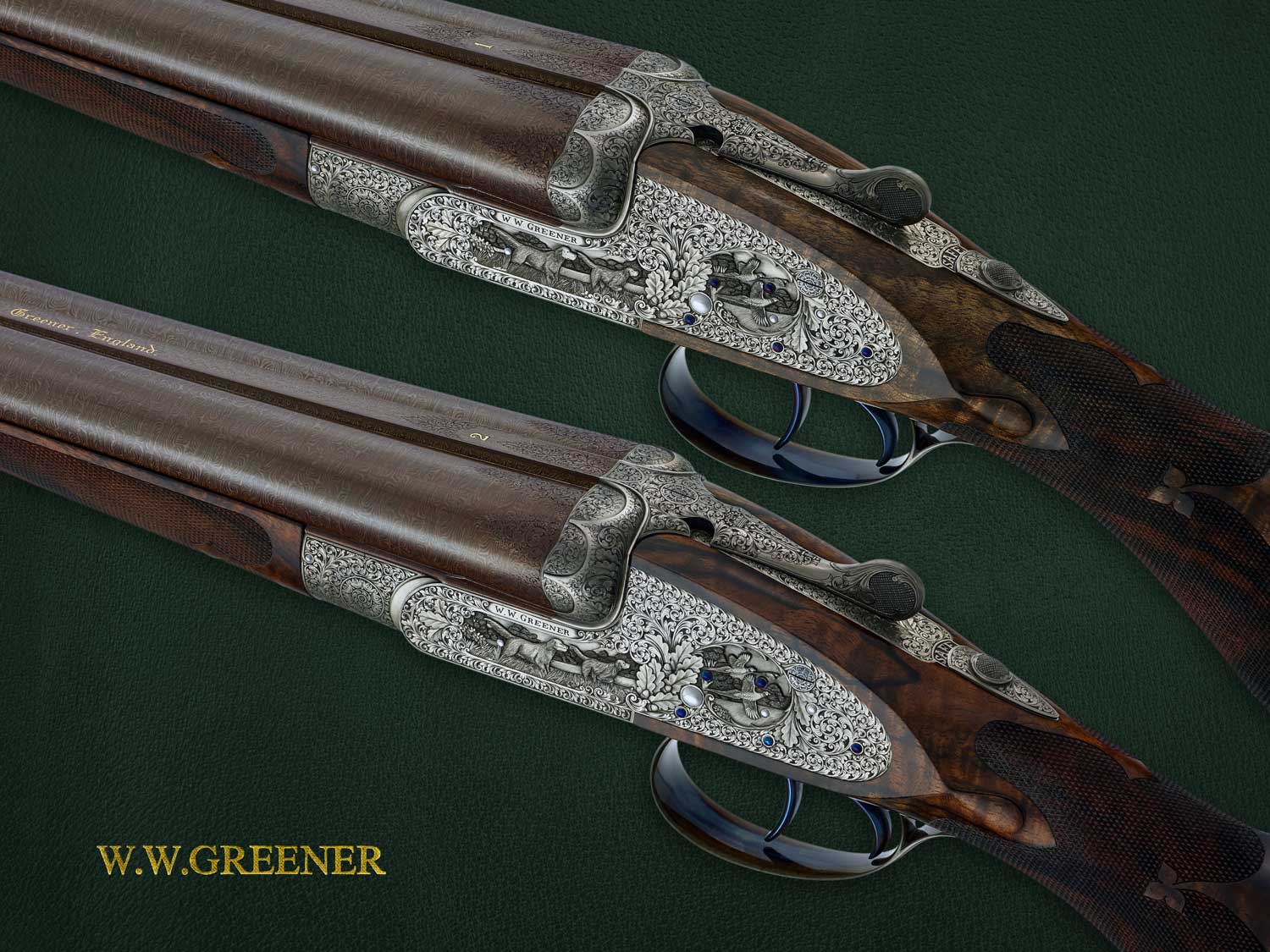
A pair of “Four Seasons” sidelocks.
During the Tandy/Dryhurst era, many Greeners were engraved by Alan Brown with help from his brother Paul. Some Greener aficionados will be familiar with the St. George and Viking sidelocks and the 12-bore hammer gun. What makes the new G gun perhaps even more desirable is that it’s likely Alan and Paul Brown’s swan song. “Yes, as it turns out that gun may be our last commission as I’m considering retiring from gun engraving,” said Alan Brown in response to our enquiry. The collector who ordered it cannot help but be pleased.
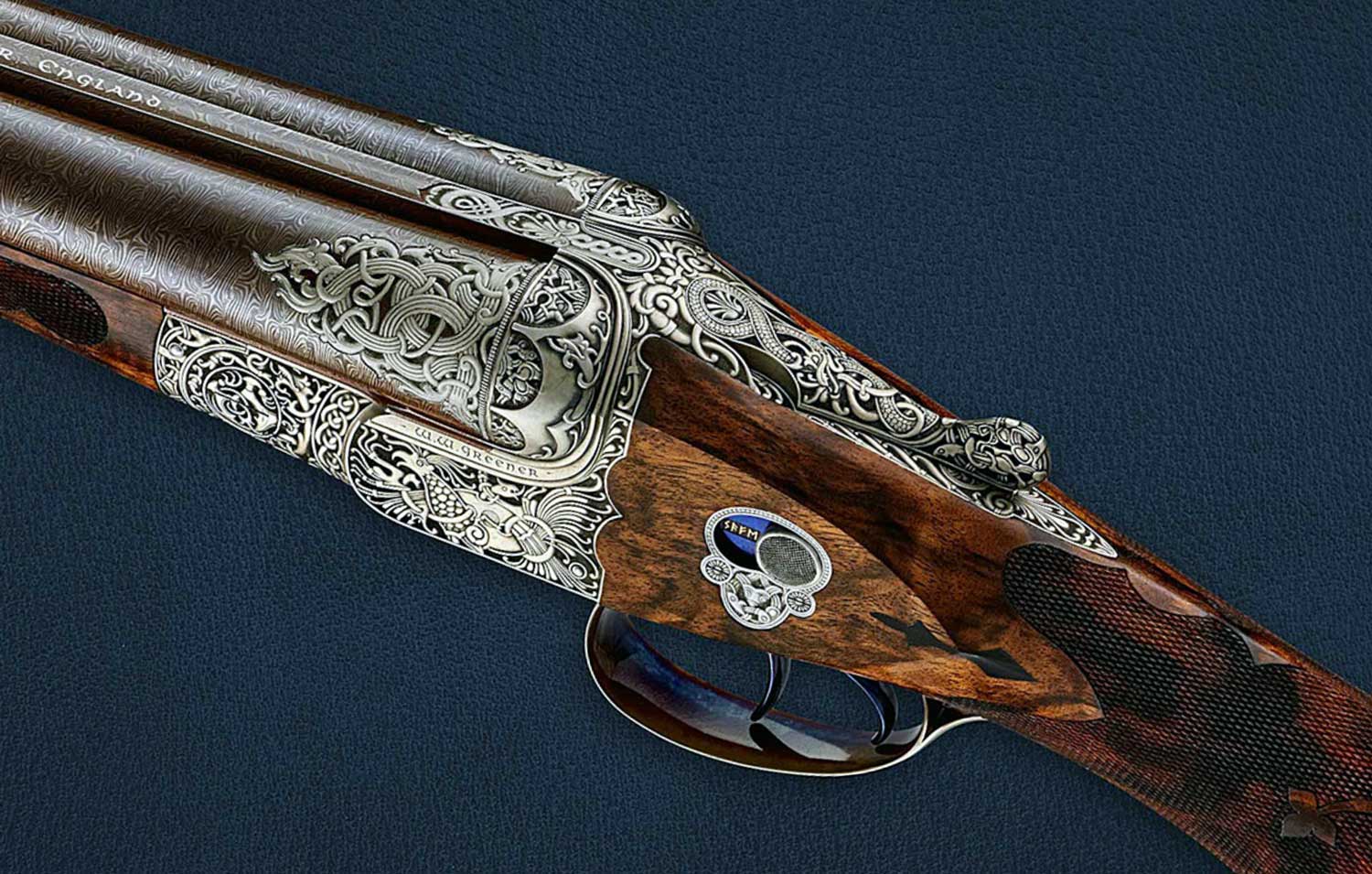
A new Viking “G” gun.
Third generation family member William Oliver Greener, who once wrote a feature for The Magazine of Art called “The Ornamentation of Early Firearms,” is perhaps better known as the ghost writer of his father’s book The Gun and its Development. In his chapter on engraving, he had this to say: “Fine workmanship is of itself an excellent indication of quality—and fine workmanship is more noticeable in the decoration than in many other points observable in firearms.” Yet many of us have a fraught relationship with W. W. Greener because so many of the guns we see are not those retained in private collections and some of the surviving examples are obviously both sparely engraved and utilitarian. But in the 20th century, the double barrel side-by-side was reinvented as a design object as much as a shotgun.
William Morris once said, “Have nothing in your home that is not beautiful.” He may have been talking about W. W. Greener’s exhibition quality guns. No representative collection of British guns should be without one. They are one of the few British makers who can compete successfully with London’s best. Today, Greener is a viable company with a fabulous reputation and may be available for sale to the right buyer.”

